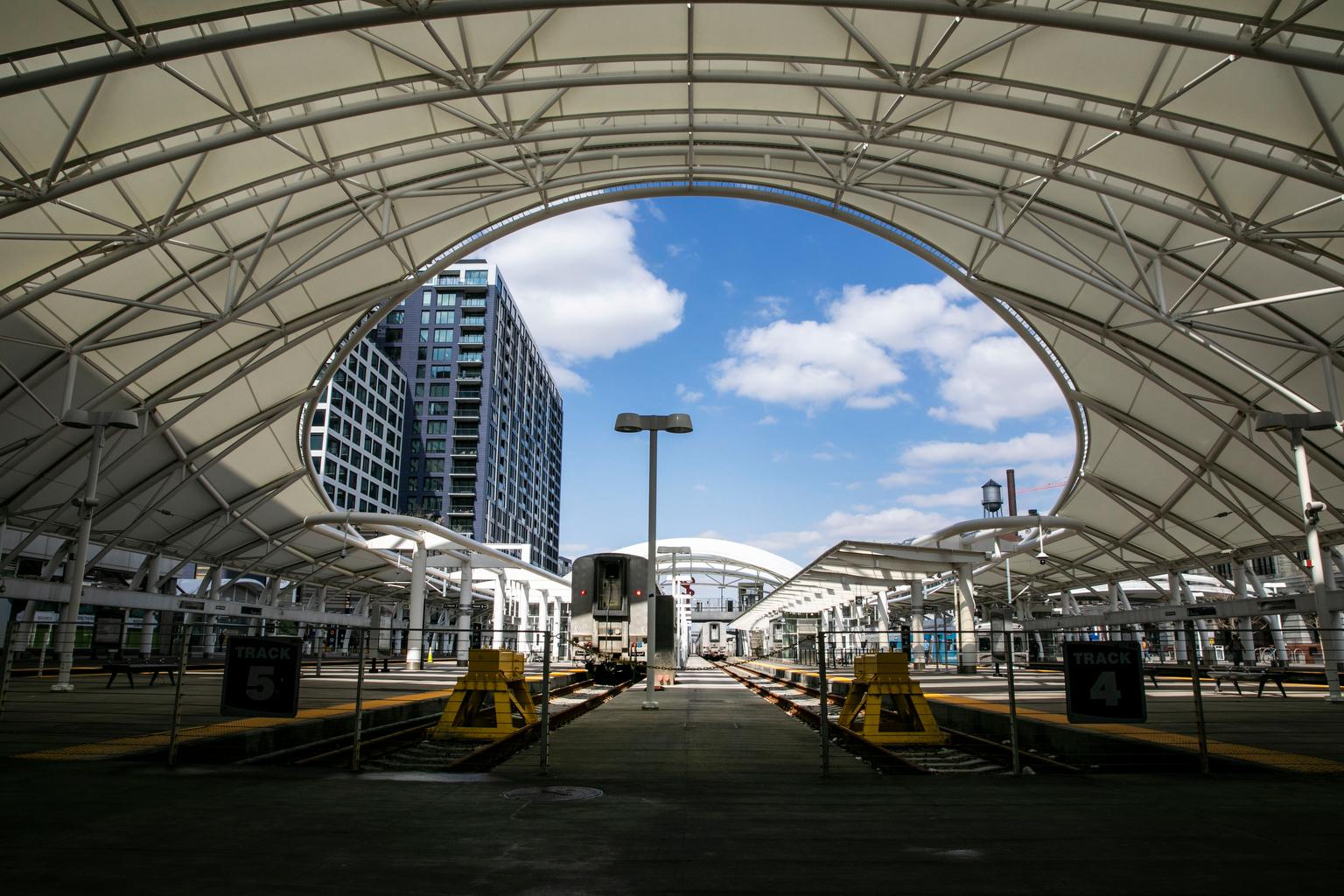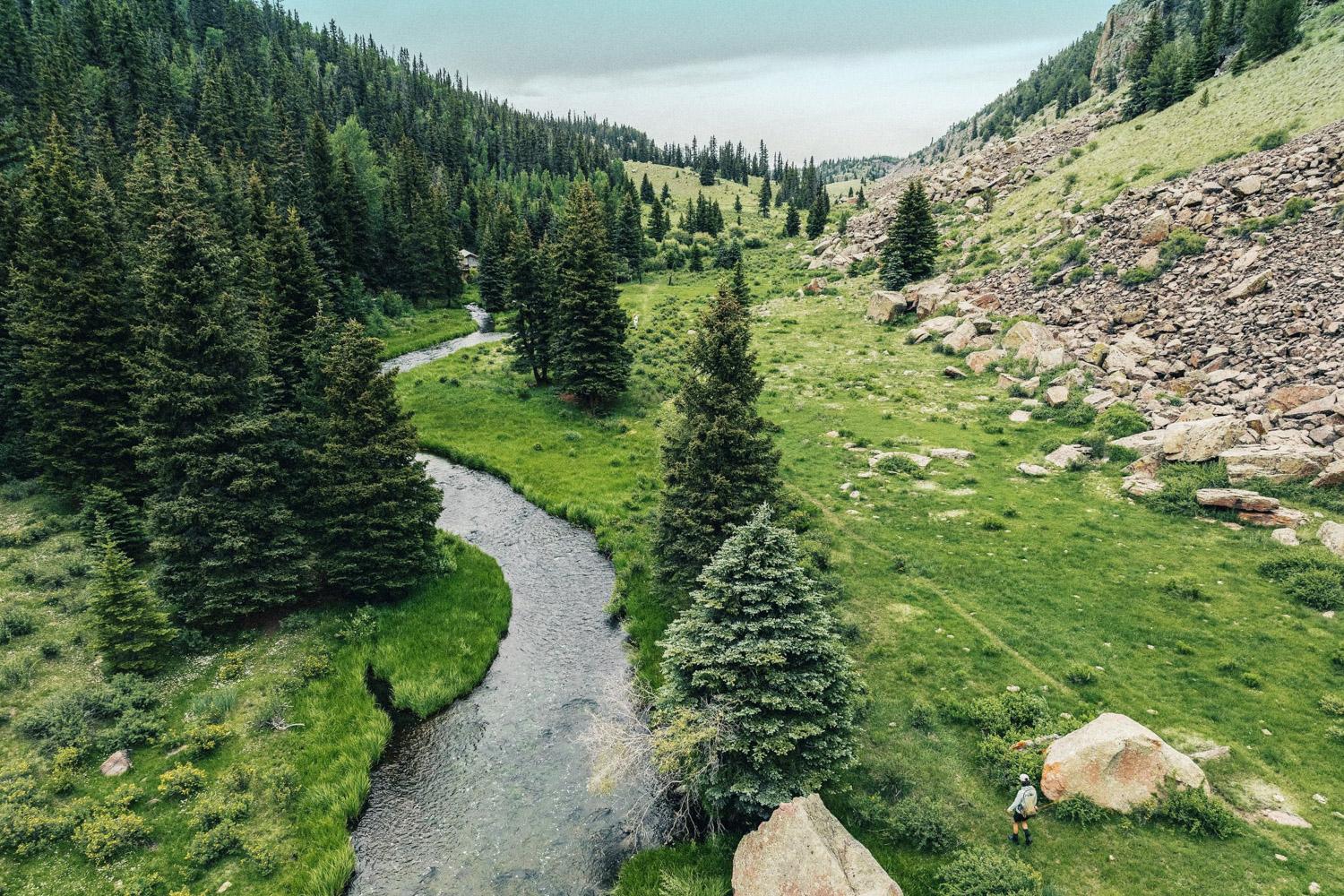
District leaders tasked with planning and funding a passenger rail line along Colorado’s Front Range favor a relatively low-cost “starter service” to meet a push from Gov. Jared Polis to pursue federal funding and a 2024 ballot funding measure.
A bare-bones rail line would share track with freight trains and operate only up to six trips a day, according to a 2020 analysis. Such an approach is estimated to cost about $2 billion to build, far less than the $8 billion to $14 billion it would take to build a line with its own tracks and much more frequent service.
“If we go for the Cadillac version right off the bat, that’s a large ask to the voters. It’s a difficult sell,” Andy Karsian, general manager for the Front Range Passenger Rail District, told Colorado Matters.
“Yes, there’s something to be said for asking for the whole project right off the bat,” he added. “But we think that it makes more strategic sense to start off small and then be able to build that out … as ridership and interest grows.”
Karsian joined CPR’s “Colorado Matters” to answer questions — including from some listeners and readers — about the fledgling project. Here are some of the key takeaways.
Read the interview
Will the district put a measure on the 2024 ballot?
We are going to put a ballot measure in front of voters. We don't know exactly when it is going to be. There is a lot of work that needs to be done prior to getting that onto the ballot. It doesn't mean that it can't be done before ‘24, but that's what we're looking at … We will have a much better sense as the legislative session gets underway [early next year] and we have conversations with the legislature and the governor.
Would ‘24 be a pretty optimistic timeline, then?
‘24 would be an aggressive, optimistic timeline.
Do we know that there are enough people to make this worthwhile?
That is part of the ridership modeling that we're doing currently under the service development plan, and that will give us a sense of the ridership that we are looking at. We feel that there is a strong desire for the passenger rail to be built, and we believe the riders will be there.
Why not focus public dollars on expanding Interstate 25?
I think that continues to be an option, of course. And one of the reasons that we would build this passenger rail is because I-25, which it will run parallel to, is getting maxed out. As we all know, it's a difficult highway to drive. It closes often during the wintertime. It can be dangerous, it's congested, and there's limited potential for expanding it into the future.
When we are looking at going through Denver, there's only a limited amount of opportunity for expansion. So we're really looking toward a new opportunity and a new transportation option for the region as opposed to trying to pile in more cars into the existing interstate system.
Why not add more bus service along I-25? It would certainly be cheaper than building a rail line.
Running more buses on I-25 is an option, but it's still going to be running buses on a congested highway. This passenger rail removes people from the highway and puts them onto another option. It connects those major markets and it provides a safer, more reliable, cleaner way to travel.
Listener Allen Cowgill of Denver asked: If the Front Range passenger trains are going to be sharing freight tracks, will it be late? The California Zephyr is often late coming through Denver, which also shares freight tracks.
Great question. And the answer will be no. Because we're comparing a bit of apples and oranges … What we will be building is an inter-city passenger rail system connecting the regional markets, not going nationally across the country. The time schedules will be more controlled and manageable with the freight [companies] within this region along these tracks than they are across multiple areas that create the delays for these cross-country Amtrak routes.
BNSF threw a wrench into the last big passenger rail push here when it told the Regional Transportation District that it would charge more than $500 million to use their rail line between Denver and Longmont.
Listener Matt Frommer, with the Southwest Energy Efficiency Project, asked: What lessons have we learned from RTD’s FasTracks project, and how are we applying them to the Front Range rail project?
A few lessons that we've learned is the importance of planning upfront. Another lesson we learned is negotiating with the railroads early to try and get that level of detail as early as possible.
You wouldn't go to the ballot without having negotiated with the private rail lines and presumably having a figure in mind?
Absolutely correct.
But the railroads wouldn’t negotiate with RTD until they had gone to the ballot. So what does that look like for you?
With the new creation of the Front Range Passenger Rail district and the availability of the billions of dollars at the federal level, plus some state matching dollars that have been set aside at the legislature, we have an opportunity now that wasn't available back in the FasTracks days.
Are you expecting the private rail lines to drop their prices or are you just saying we've got more bucks now?
I think the answer is we have access to more bucks now.
There are a handful of route options, especially north of Denver. Is that going to be nailed down before a vote?
It will be nailed down before a vote. And the district board, probably by the end of the year, will have a strong sense on what route they will endorse. The strongest one is the one where it connects the northwest rail route that goes up from Denver to Boulder and it goes up to Longmont and continues up to Fort Collins. That one connects the major markets. It uses the existing freight rail lines, and we have opportunities to build upon the prior planning efforts.
So Boulder's going to get the train in some form that did not come as a result of FasTracks.
And we are hoping that we can leverage the vote from the past to help move this ballot measure ahead by collaborating with RTD to try and establish some commuter rail along that corridor, too.
Are you considering a private operator?
A private operator is an option, and we will continue to look at all those options as part of that diverse funding approach. The public-private partnerships are absolutely a part of how we will be looking at this.
Listener Cheryl Lindstrom of Edwards asked: Has there been any discussion in recent years of extending the trains from the western side of Denver up into the mountains?
We would love to see mountain rail going up there. The challenges for mountain rail are more so than the ones that we're addressing right now for the Front Range. You think about the elevation, the curves, the variety of different challenges going up into the mountains.
We are working with our I-70 partners to make sure that any future rail line that is built will include the technology and capacity to expand mountain rail into the future.
It doesn't sound like you would go to the ballot, though with any sort of specific high country proposal.
That's correct.
What’s the latest that you want to see this Front Range rail line open?
We are looking at the latest 10 to 13 years in the future. If it's beyond that, we haven't done our job.









